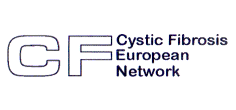Genetic testing
Neurofibromatosis
Neurofibromatosis
Neurofibromatosis type 1 (NF1, Von Recklinghausen disease) is one of the most frequently occurring autosomal dominant disorders belonging to the group of neurocutaneous dysplasias (phakomatoses). The estimated worldwide incidence of the disease is 1/2500-3500. The symptoms are caused by mutations occurring in the NF1 gene, which is located on chromosome 17 (17q11.2).
The NF1 gene encodes neurofibromin 1, which is a neoplastic processes suppressor. The gene is exceptionally large (more than 350 base pairs) and very susceptible to damage. That is why approximately 50-70% of occurrences result from de novo mutations. In the remaining cases, the mutations are inherited from a parent.
Currently, the HGMD database features roughly 2,000 various mutations related to NF1. The mutations are located throughout the gene. No founder mutations or sequence regions particularly prone to damage have been noted for NF1, so the entire coding sequence of the gene must be checked for diagnostic purposes.
The NF1-1 test is a procedure that should be carried out first when the decision is taken to perform the genetic diagnostics of neurofibromatosis type 1. It enables diagnosticians to verify the correctness of both the gene’s entire coding sequence and its immediate vicinity, where approximately 90% of the already identified mutations can be found. A few (ca. 5%) occurrences of the condition are connected with a lack of the entire gene or of its significant part. Such changes may be detected by running, for instance, the NF1-MLPA test. The test is treated as supplementary to NF1-1 unless a patient, apart from typical NF1 characteristics, shows symptoms indicative of microdeletion syndrome: dysmorphia, mental disability and/or considerably accelerated growth during childhood. In such cases, diagnostics should begin with the NF1-MLPA test.
At times, the molecular basis of the disorder makes it necessary to apply mRNA testing or cytogenetic diagnostics. This concerns 5% of the cases.
The likelihood of detecting a mutation depends on a patient’s age and on whether he or she meets the diagnostic criteria of the disease listed below.
Disease clinical picture. The identification of neurofibromatosis type 1 alone does not usually require genetic diagnostics and is carried out in accordance with the NIH criteria, at least two of which must be met by the patient:
- At least 6 café-au-lait spots >5 mm in diameter in children or >15 mm in diameter after pubescence
- At least 2 neurofibromas of any kind or at least one plexiform neurofibroma
- Freckles in the underarms and groin
- Optic nerve glioma
- At least two Lisch nodules in the iris (noncancerous hamartoma-type tumors, a developmental anomaly, which does not affect vision)
- Characteristic bone impairment, such as sphenoid bone dysplasia or the thinning of the cortical layer of long bones, which can lead to developing the so-called nonunions (often in the tibia)
- Any of the above features as well as a first degree relative (parent, sibling or child) with diagnosed NF1
Following the above criteria, a diagnosis can be made around the age of four, while the disease with all its symptoms usually develops until puberty. Meeting the criteria is crucial for the likelihood of identifying mutations in NF1. Studies published by various institutions working with NF1 state, for example, that:
- if genetic testing is performed for patients showing all the symptoms, an NF1 mutation is confirmed in 97% of the cases when all the currently available diagnostic methods are used jointly;
- a mutation can be found in 78-95% of patients meeting the NIH criteria, depending on the diagnostic methods used;
- taking into consideration all the cases of the suspicion of NF1, a mutation is confirmed in 59-86% of patients.
In differential NF1 diagnostics, a number of disorders must be considered depending on a patient’s clinical picture, e.g. Legius syndrome, Noonan syndrome or McCune-Albright syndrome.
Genetic diagnostics is of special importance when an affected person plans on having children as well as when the disease occurs in the family. While penetration is practically one hundred per cent, there is a significant variability of symptoms even among carriers of the same NF1 mutation. Confirmed carriers should be provided with appropriate prevention, aimed at an early detection of clinical problems typical of a given age group. For instance, orthopedic problems or optic nerve gliomas may appear in infancy, whereas in adulthood there is an increased risk of developing malignant hypertension or some types of tumor, especially those arising from connective tissue (e.g. sarcomas) or from peripheral nerve sheaths (MPSNT).
Before taking the decision to order a test, we recommend visiting the genetic counseling office to confirm whether the patient meets the NF1 diagnostic criteria. Should it be impossible to arrange an appointment, we recommend contacting the diagnostics laboratory and notifying the staff of all the available information indicating that a test is requisite.
Literature:
Genereviews http://www.ncbi.nlm.nih.gov/books/NBK1109/
Fashold R Am. J Hum Genet. 2000;66:790–818
Mattocks C et al. J Med Genet. 2004;41:e48
Valero MC et al. J Mol Diagn. 2011;13:113–122
Griffiths S et al. Fam Cancer. 2007;6:21-34.
Pasmant E et al. Hum Mutat. 2010;31:E1506-18
van Minkelen R et al. Clin Genet. 2014;85:318-27










 venous blood collected
venous blood collected
 saliva (spitting into a tube is required for sample collection, therefore the kit is not suitable for children under the age of 5)
saliva (spitting into a tube is required for sample collection, therefore the kit is not suitable for children under the age of 5)
 oral cavity swab
(kit dedicated to infants and babies)
oral cavity swab
(kit dedicated to infants and babies)